(first published 4/11/2012) From time to time we all get a bit insecure about our appearance. Whether it’s our clothes, the angle of our nose or our lack of muscles, there’s something about ourselves we want to change. And no car understands our need to fit in better than the Plymouth Valiant.
We all know the original Valiant. Once seen, never forgotten. Although it has always been my (oddball) cup of tea, its ranking at the back of the Big 3 pack of compacts in sales, despite its far superior performance and all around competence, must have been a big sore point for Mopar.
Meanwhile the cherubic and non-offensive Falcon continued to clean up in sales. The trendsetting Corvair, wild as it was, still had very healthy sales, and even the faux-elegant Comet was doing decent business. It was obvious dressing all that torsion bar/Slant Six/Torqueflite goodness in outre styling from the mind of increasingly embattled Virgil Exner wasn’t the way into thrifty wallets.
Virgil himself must have been stung strongly to do such an about face on what was his first salvo in the post Forward Look era to come up with such a subdued follow up. It was cleaner and more generic that the wild child that came out of the Highland Park womb in the fall of 1959.
About the only hint that underneath the new conservative cardigan and khakis, this was the same overachieving Valiant as before is the slight rotundness of the decklid between those two blunt almost fins, which were added by incoming Design Chief Elwood Engel, to square up the rear end some. One of the visual impressions that the new Valiant gave was of general compactness. the 1960-62 Valiants seem like a larger sea of undulating curves that belie its rather abbreviated compact size.
Along with the buttoned down appearance came a little bit of open air flair for the Valiant in the form of V200 and Signet convertibles. Prices across the board were also reduced a bit, keeping with the themes of renewed conservatism. One has to wonder if all of those loops and curves cost all that much more per car.
Actually Valiant could brag about being America’s lowest priced convertible for 1963, since they offered two trim levels of Convertible, the mid level 200 and the top trim Signet. Falcon, Lark, Corvair and Nova only offered convertibles in their top trim levels. And few of those top down fun machines came with as much zest for the dollar as the Valiant did.
Although a V8 option wouldn’t appear for another model year, the 170 cube and 225 cube Slant Sixes held their own against the competition. And both engines were cheaper than the V8 and turbo options of its competition. The argument can be made that the Valiant, even after 4 years, had the best six cylinder options among the crop of compacts.
All of this chalked up to the Valiant’s having a great year in 1963, appearing all new against all of its competitors. More than 225,000 of the variety of Valiants this year headed home to willing customers.
It actually set a new tone in the life trajectory of the Valiant. By 1963 the Falcon was at a crossroads between appealing to the more luxury compact dynamic set forth by the Corvair Monza and the original intended purpose of being a no frills throwaway first car. Once Ford focused on the Mustang, the Falcon floundered, becoming an also ran in the field it dominated almost as quickly as it became the star of the class of ’60.
The Valiant, however, went from the weirdo that ate his boogers to being the respectable accountant (or the more talented Falcon). A respectable accountant that got good referrals from happy customers each year, solidifying the reputation of being the pragmatic choice for people who really didn’t care about cars.
Inherently even if an appliance is excellent, if it looks unfamiliar few customers will take it. By trimming the wild plumage previously festooned on the bones, the Plymouth Valiant transformed overnight into that phenomenon we came to know so well in the post-war era.
The Appliance Car. (Thanks to Paul for the photos of the red Valiant from Eugene).
Update 3/1/21 by PN: Although Valiant sales improved somewhat for 1963 and 1965, after that they went into serious decline—along with most other compacts—until 1970, with the arrival of the Duster, which sold extremely well. The overwhelming majority of Valiant sales from 1970-1976, which peaked at 460k in 1974, were for the Duster. Valiant sedan sales were quite modest during all those years.
















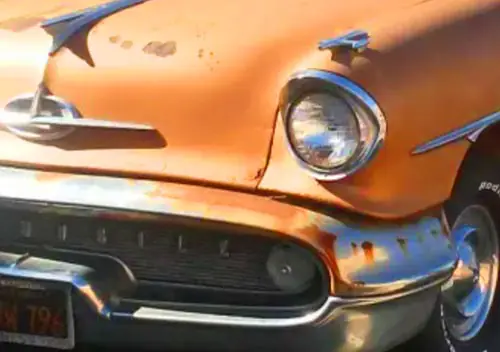
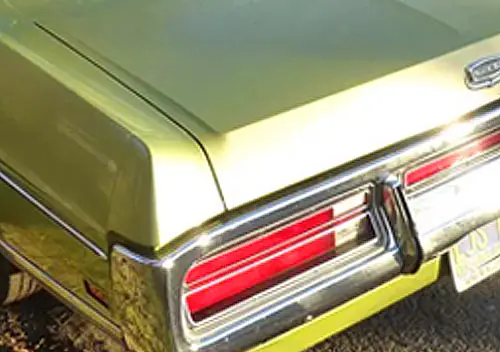
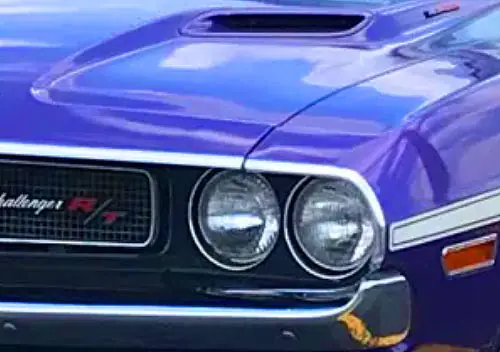


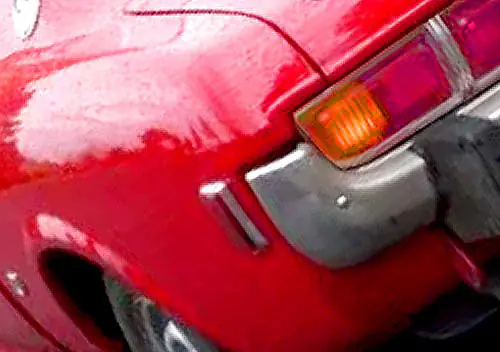
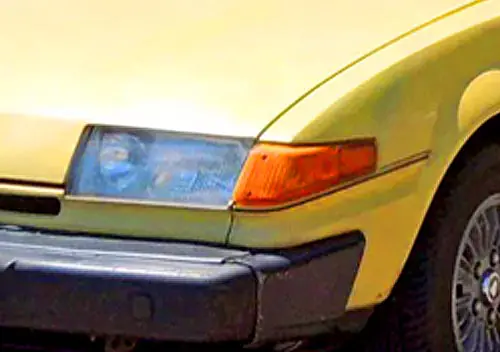

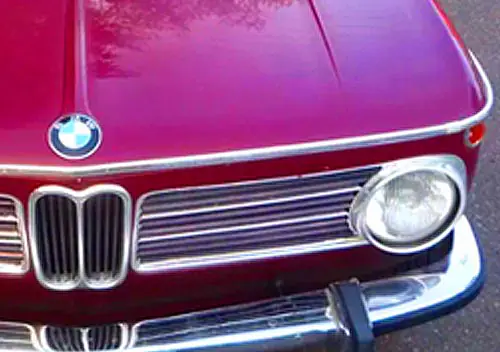
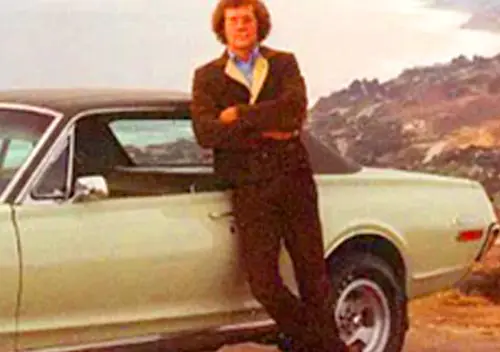
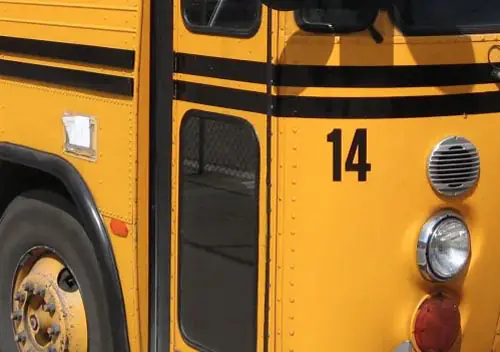
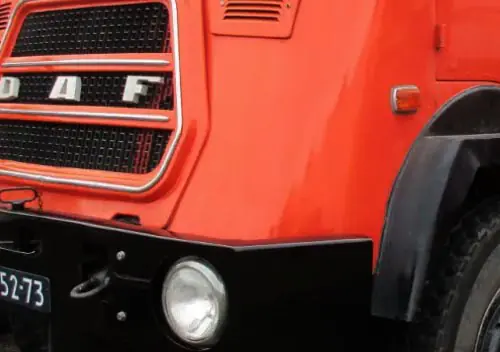
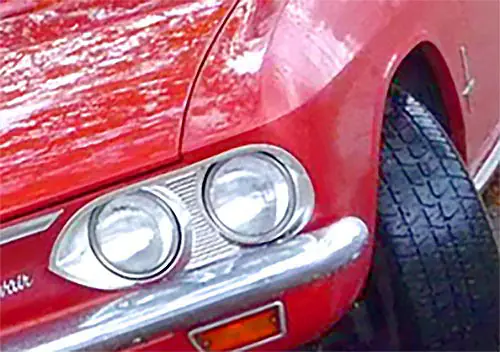
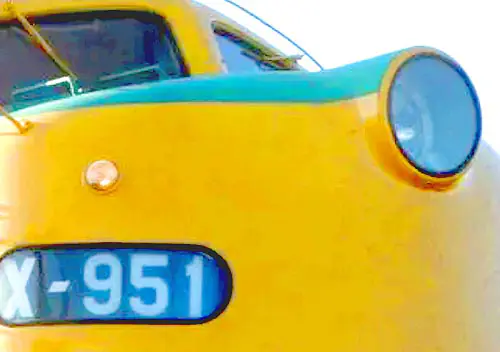
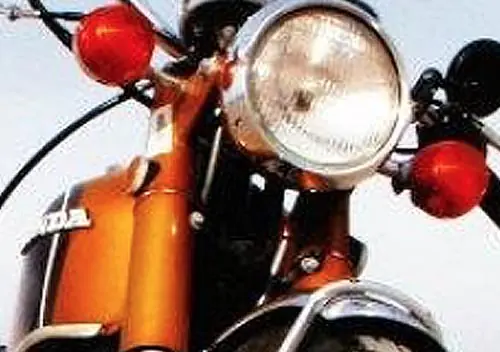
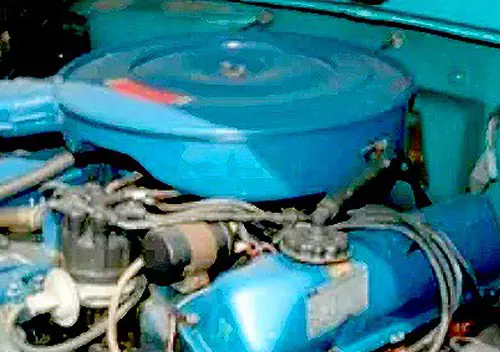
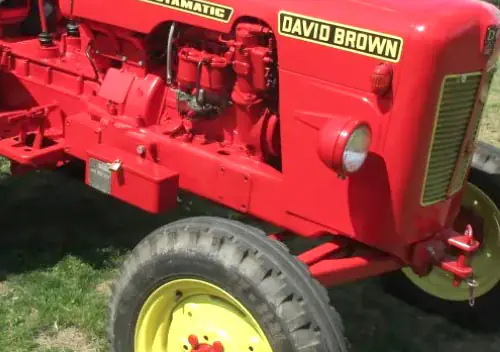
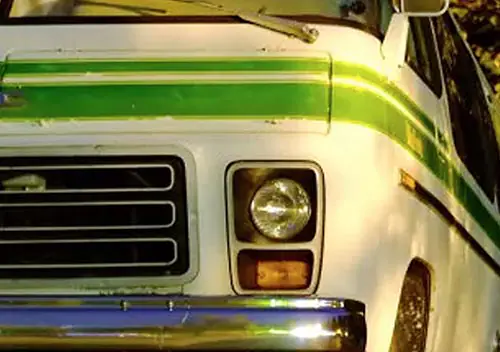

To me, the 63 model was a good start, but these didn’t really become beautiful until the 64s. One of my regrets in life is that I had a chance at a really nice 64 Valiant convertible, but did not take it. My five years with my 71 Scamp was still a fairly fresh memory, and I was not ready for a play-car with a slant 6, even if it did have pushbuttons.
It was owned by an acquaintance who had bought it on a whim, and was looking for a good home for it. I could have bought the car very reasonably and had a great little convertible for warm weather cruising, but instead, got a time/money hog of a 61 TBird hardtop that was never nice enough to really drive and enjoy. Stupid, stupid, stupid.
The older I get, the more I realize that nothing sells cars like looks and image. Wierd didn’t cut it with the Gen1 Valiant, and it still doesn’t with the evil clown Mazdas. So, you are exactly right, Laurence.
True, for the most part but I DO see plenty of Mazda3, clown face and all in Seattle though.
As the old saying goes, beauty is in the eye of the beholder.
There’s something delightfully European about the first generation Valiant, but I can see why it didn’t sell too well. A little too wild for most peoples’ taste. Stylistically, it looks like a 4 door Studebaker Starliner, with a lot of unnecessary bumps and curves. I think I’d rather have a second generation Signet convertible.
Thanks for a great article as always Laurence. I always enjoy your writing. That 1st gen Valiant is a look that must have been really shocking. I remember seeing them and other Chryslers in “it’s a mad mad world”.
What a cutie! I agree with JP that the grilles were nicer in 64-65, but the whole package is trim and crisp – un-American, in a good way. It would be fun to get one and warm up the /6, add dual exhaust, sway bars and decent shocks. Poor man’s Alfa or Bimmer, though you’ll get richer with all the repairs you won’t have to make.
From 1963 to 1966, the Valiants we got in Canada were much different. We got the Dart body with the Valiant front clip, except in 1965, when, for some reason, we got both versions, the US Custom 100 and the Canadian Custom 200.
My older brother had a sky blue ’64 Signet convert (bucket seat) with a 225 and four speed with Hurst shifter. He Bought used in about ’70, and since it replaced a ’62 Falcon 4-door 3-on-the-tree, seemed pretty spiffy in my 9 year old mind
Lacking funds for maintenance, he pretty much turned it to junk in about 3 years.
TTAC contributor Jim Sutherland, based in Western Canada, just happened to post this story of a ’64. Makes the American Valiant 4-door look like a tinkertoy.
http://www.thetruthaboutcars.com/2012/04/car-collectors-corner-a-1964-valiant-with-more-family-history-than-the-waltons/#more-439320
“…went from the weirdo that ate his boogers…”
Congratulations! I believe that’s the first time I have ever seen that phrase in print. That made the entire article worth reading, as I was not a fan of these particular cars, although they had their merits, especially in coupe form, whether pillarless or not.
One thing is certain – the Chrysler slant six was unbeatable, be it attached to a torqueflite or stick.
Thanks Laurence, love these things. Who can complain about all 60’s Mopars being out of reach as long as there are these crisp little Valiants?
Wierdo that ate his boogers did it for me as well, nice choice of words.
Whenever I see the original Valiant, or the last generation 5 series for that matter, I am reminded of Dame Edna.
“…weirdo that ate his boogers…” got me my first howl of the morning. Took me right back to the 1st grade. Brilliant!
I drove a very rusty 75 Valiant for three years near the end of it’s life. Brown mustard yellow with vinyl interior. No radio ac, or any exterior or interior trim whatsoever! It made it to 169,000 miles with minimal maintenance. I’ll never forget it.
Great article, and I love the photos. The photo of the first-generation Valiant almost looks like a brochure or ad shot, but with a real street scene, instead of a carefully manicured background.
While Virgil Exner gets credit for the design of the 1963 Valiant, I’ve read that Elwood Engel did make a last-minute change to the car. Exner’s original design featured rear fenders that sloped at the same angle as the trunk lid. Engel raised the fenders to present a more imposing profile.
It’s also interesting that the 1963 model retains the bold grille theme of the 1960-62 models. This gives the 1963 car a visual link to the previous generation, while the overall design eliminates the unusual proportions and odd body sculpturing that had previously turned off potential customers.
Love the one you found, with the chrome trim rings and hubcaps. That was always a great look. For some reason the ones I see are usually white or tan/brown, which doesn’t flatter them much.
I had a friend years ago who had one of these (in white), it constantly broke down. So I sold him my ’74 Pontiac Grandville at a giveaway price — it had always been a great car, but I’d just acquired a ’65 Caddy Calais Coupe and figured it’d be nice for my friend to have a decent car finally. But the Pontiac also left him stranded repeatedly. That’s when I realized that some people just have bad CARma, while others (like me) can have almost any car and it will always be fine… Weird, but true. 🙂
We used to say that these people had the “King Feces Touch”.
Had a friend with a later model with slant six and auto. Would like to be a fan and I suppose I am because of the durability of those models. However, my six cylinder 68 Nova ran circles around it.
Now, I just think any old car with a light body and an inline six is just what the doctor ordered.
Back in 1976, I helped my brother and a couple of his friends stuff a 383 into a rusty 1963 Valiant Signet coupe. Louie, who was my brother’s friend, had gotten the car as a freebie from his late uncle. Louie decided he wanted to go drag racing, but had little idea how to do it. I believe the thought process was something like little car + big motor = good E.T.s…
Louie procures a 383 and TorqueFlite out of a Newport and yanks out the Slant Six. So far, so good. Wedging in the 383, TQ and tubular headers was a comedy of errors for four guys who knew little about clearances, transmission cross members. traction bars, torsion bars, torch cutting and arc welding.
Long story short, we got the big block in, with much welding and cussing. I learned many new words that week.
We go to the local 1/8 mile that weekend, and while there we discover a new wrinkle in our plans (literally). The shoehorned 383 produced so much power that it literally twisted the Valiant body; so much that the roof was wrinkled and the doors were wedged shut. We (collectively) had no idea the mountains of torque even a plebian 4bbl 383 could produce relative to a Slant Six… Louie, who’s no lightweight, had to wriggle his fat butt through the window to get out of the car.
Lessons learned? Don’t cut major cross members or torque boxes when installing headers and transmission. Invest in something called ladder bars. Most of all, don’t use a rusty, 13 year old mistreated Valiant as a race car…
Best story I’ve heard all day. Here I thought it was going to be a simple ending that involved a complete lack of traction over the rear wheels leading to really ho-hum 1/4 mile times. But your story is a classic.
You get me thinking . . . A few years ago, a teenager lived at a house around the corner from me. He showed up at his house one day with a mid 70s Dodge pickup that someone had sawed the roof and upper doors off. His father about messed his drawers when the kid brought it home. I can only imagine what kind of a flexible flyer it was. It disappeared a few weeks later. Too bad it was before CC, or I would certainly have shared it.
That reminds me of an old Volvo PV544 a buddy found one day. He wanted to make a dune buggy out of it, so he sawed off the top. Bad idea. First time he tried driving it, it immediately collapsed in the middle and looked like a fat banana, rocker panels dragging the ground, doors popped open and all!
His words?
“How was I supposed to know it was a uni-body?”
Fun in the late 1960’s…
“How was I supposed to know it was a uni-body?”
This would make a great feature: the opposite of a Curbside Caption where you supply the caption and the rest of us look for pictures that go with it. This one is perfect. 🙂
pickups have frames and a body in two sections…the cab and the bed. You can remove the bed entirely off the frame and the roof off the cab with zero ill effects on the chassis. In fact, depending on how old and primitive the pickup is, you might improve it.
Sounds like he should have done a run in reverse to straighten the car back out!
Five kinds of awesome, GZ.
Our Valiants didnt have the same front and rear, the AP5 was a much cleaner design and in NZ Valiants outsold the weakkneed Falcon easily until around 71 and the demise of the Zephyr
Apparently only 6 panels are shared (of the outer sheetmetal at least) – 4 doors and front guards/fenders. The rear window is flat which leads to a squarer roof & C pillar, the boot/trunk takes the lines of the rear ‘fins’ straight across for more luggage room. The grille is a full-width plain straight horizontal bar affair, as with the US car they picked up the style stakes later.
I must say I don’t like the grille on this car though, I think it is the rounded corners that don’t gel with the generally flat front of the car.
My grandmother had a ’64 for almost 20 years. My dad helped her trade it for an ’84 Escort (yuck!) when the Valiant started rusting through the floorboards. I was just at driving age and interested in the Valiant, but my dad thought the rust problem (and exhaust coming into car) was too dangerous to deal with. I loved riding in it with Gram as a kid, and playing with the pushbutton trans selector when it was parked. When we stopped in traffic, the slant six was so quiet (compared to the huge V8s in my parent’s cars) that I thought the engine wasn’t running! Here it is in the ’70s.
So sad, the original Valiant had so much character. Complex curves, C-pillars flowing into the rear fenders, and a proud hood and grille. The greenhouse unified with the body, its pillars spreading out organically at nice angles, really attractive roof and trunk shapes. Front fender brow lines streaking back, lining up with the rear fender sweeps. One of my all-time favorites.
This ’63 has all the character and style of a filing cabinet. Its face is blank. The flat grille looks like off-the-shelf perforated sheet metal. The sculpted front fender sweeps don’t go with anything else on the car. It could be one of those generic cars you see in insurance ads and architect’s renderings. The appliance car – exactly, Laurence. What a shame.
The first-generation Valiant is the more interesting design, but Valiant sales increased by over 70,000 units for 1963 compared to 1962, so I doubt that Chrysler Corporation or Chrysler-Plymouth dealers missed it very much. Sales actually increased slightly for 1964, despite the design being a year old.
No doubt, I think that’s Laurence’s point. Sadly there’s a good market in appliance cars for people who just don’t care. +1 to Chicagoland: that’s why we get so many boring lookalike cars.
Yeah, I’m actually in the camp that finds the original Valiant, especially done up as the ’62 Signet was was particularly dashing. The 1963 set the stage for the Valiant as the first true postwar Appliance car, which it fully embraced by dropping the wagon, hardtop and convertible (or moving to making them Barracudas) by 1967.
Keep in mind that the ’63 was also in tune with the times. Design was moving from Exner goofiness to Engel sharpness in just about everything, even clothing. If anything, Chrysler was a couple of years behind Ford and GM. All one has to do is check out the Big Three 1959 offerings versus four years later. So the conformity wasn’t just to match the market but to reflect the change in fashion.
When people complain about cars looking alike, it’s because previous risky styling has generated so much belly-aching from average casual car buyers. So, no more risks and more conformity.
Was a youngster when my parents bought a new 1963 Valiant Signet Convertible. Had a sporty/luxury feel with the bucket seats and chromed dashboard trim. The car had the base 170 six cylinder, and it was not quick. The push button automatic fascinated me, and the car had that characteristic Chrysler musical sound to the starter. The Valiant developed an oil leak and needed transmission repair and was traded in for a new Mustang Convertible with a 289 V8 in 1966. The papers show that on trade the Vaiant had 22,000 miles and they were allowed only $750.00!
Anyway, still wish I had that Valiant…
The 1967-73 Valiant 4-door sedan seems to continue some of the themes of the 1963-66 Valiant.
And it’s red, just like the 1970-71 Valiant used as a Guinea Pig by a big truck in the movie “Duel”. http://www.imcdb.org/vehicle_2481-Plymouth-Valiant-1971.html
I’ve got a good ’63 Valiant story to share. A fellow license plate collector had the idea in 1975 to make a trip from Vermont to Alaska, stopping at the annual license plate club convention in Calgary along the way. He bought an old blue slant-6 3-speed Valiant 2-door sedan, loaded in some trading stock, and headed out. The only problem he had along the way was when the driver’s side of the front seat fell through the floor at a railroad crossing in Illinois. He propped it up with a length of 2×4 and continued on. He ended up not having any further problems with the car, and sold it in Alaska for what he’d paid.
Back in the early to mid 70’s, neighbors next door to us had a grandmother who drove a ’62 Valiant that was blue and white and yes, a 4 door sedan.
I’ve thought that original Valiant an odd duckling, even back then and still now in an interesting way. However, never noticed until the side shot of that first gen model how the back doors were oddly shaped so that they slopped inward towards the top.
That red ’63 looks quite nice in an unassuming way but I can see why it outsold the first gen model. I love how it’s all stock and even adds the chrome trim rings to the basic wheels for a nice touch.
I’d say this is a handsome – and honest looking little car for the times and fitted with the 225 slant six and torqueflite, a combo that can’t be beat for most situations.
And yes, loved the whir, whir sound of the old reduction gear starters. I grew up on that starter sound and it’s still quite distinctive sounding even now.
I can totally see where Rootes Group’s Roy Axe got his inspiration for the Hillman Hunter/Rootes Arrow range of cars. All these years, I thought it was from Mercedes.
Tail end aside, that car’s shape doesn’t look entirely out of date, and the slight wrap around rear window is appealing as well.
Yes, as Bryce noted further up the page, our 1963 Valiants had different front and rear ends – as the photo of this ’63 currently on trademe shows:
Perfect illustration of the difference – you can see the more formal roofline, good for wearing hats as people still did then.
What do the US readers think of the difference?
I like it better than the US model. The grille looks a bit like the ’65 Dart would become. C-pillar looks a bit more premium or formal, not bad. I much prefer the US Dodge Dart of that era over the Valiant, much more character. If appliances sold better. so be it. Chrysler was fighting for survival, as usual.
D’oh! I didn’t even notice the difference in the roofline! *smacks head with hand*
I saw a 1960-vintage Valiant at a used car lot in Toronto several years ago…right next to an old bullet-nosed Studebaker. The Valiant was in nice shape, and if I had been in the market I might have snapped it up as a summer car. Even the engine compartment was spotless. When I started kindergarten in 1968, my teacher (a little old schoolmarm if there ever was one) had a light blue ’67 four door Valiant that I saw until around 1973 or ’74 when she retired. It was always well kept, and I wondered what happened to it. Years later, in the late ’80’s, a friend of my sister had an identical ’67 Valiant that was still in great shape. I never thought to ask her if she knew of the car’s history, but it wouldn’t have surprised me to learn that it was the same old car, still humming along after all those years.
The rear 3/4 view reminds me of a Heckflosse.
And the front clip looks like a `63 Rambler American.
I went to a Chrysler/Plymouth dealer in downtown Mexico City in 1963. On the showroom floor was a new Valiant 2dr hardtop set up like a NASCAR stocker-full cage, side exiting exhaust, stripped interior and a 4-speed. I was knocked out. The Valiants were kings of the 2-liter and above class and kicked Alfa Romeo’s ass.
The 1960-62 Dodge Lancer (the Valiant’s badge twin) was better looking, I think. Of course, it was the “Dart” before the actual Dart got downsized. The Lancer’s front end was cleaner, and the back end didn’t have those goofy tail lights that looked like slanted cat’s eyes. Enough curves to be snazzy, but not quite as over-the-top as the Valiant. A convertible would have been nice.
My uncle had a green one of these after he was in the Army. He traded it for an Alfa-Romeo Spyder after finishing school and getting a great job with IBM. He couldn’t have had the Valiant for for than a couple of years because he had the Alfa in 1966.
My elementary school art teacher drove an original base Valiant. She was an old spinster who lived with her bachelor brother in a nice colonial type home. I’d like to say she was a sweet old lady, but I can’t. She was of strict German extraction, and when I turned in a tracing of a horse instead of drawing it the way she instructed, she promptly boxed my ears.
To those who have never had their ears boxed, it is quite painful and potentially permanently damaging. Today, I could imagine jail time for the teacher who inflicted such punishment.
Probably 30 years later well into her 90’s, I happened to walk past her house. Unbelievably, she recognized me as one of her students, hugged me and actually remembered my name. I greeted her with equal warmth and chatted a while. I bore no grudge.
She died a few years later, the oldest member of her church congregation.
I have a 1963 Valiant Signet 200 and am wondering what the difference is between a Signet 200 and a plain Signet. Somehow I think it’s the trim plus mine has front bucket seats. Any help I’d appreciate. Thanks.
I just checked and there is no 63 Valiant brochure at oldcarbrochures.com. I would check Allpar which, I believe, links to a Valiant site.
IIRC there is no plain Signet. They were all Signet 200s, at least in the US.
I’ve had mine for over 30 years: 1963 Signet 200 2 door hardtop. It came with a radio, heater and probably whitewalls. Nothing else. Three on the column. It’s always seemed curious to me and I assume that it was either A: special ordered by a frugal customer who found the 100 and 200s too plain and wanted the same practicality of those offerings with a little more flash and nothing else, or B: special ordered by the dealership as a price leader they could advertise to generate floor traffic.
It’s as basic as a Valiant 100 except for the bucket seats and carpeting. I had initially thought the 225 was a standard offering on the Signet, but discovered just recently that the 225 also comes with 5 leaf rear springs. The 170 only 4. Mine has 4, but the 225 replaced the well worn 170 in 1988.
Not knowing it was a 170, the transplant organ was a re-manufactured 225. Since then I always wondered why the gas mileage never matched the 23 mpg I got just after buying it in 1981. Duh.
It was initially sold in by Town and Country Chrysler Plymouth in Phoenix AZ. My parents discovered it in a shopping mall parking lot in Yuma and I paid $600 for it and drove it back to L.A. [where it was built, it turns out].
It may well have gone over 200,000 miles at that point as the odo read 13,000 miles when I bought it, but the engine was totally worn out and starting to blow blue smoke and suck oil like a fiend.
It has always reminded me of a 3/4 ths size 63 Imperial, at least in the 2 door form. The tails on the 64 and 65 really show that with their almost fins and jewel like tail lights on the trailing edges. The roof line as well.
The 65 is my favorite styling wise as the visual clutter is cleaning up: the “hairpin” on the front fenders that leads the eye to nowhere is gone and the taillights and grille are just right. The wrap around aluminum trim above the bumper on the rear of the 63 is gone as well, another pointless styling feature.
But it still looks good 50 years later. That the styling has worn so well after all that time suggests to me it had a little more going for it than just an appliance car.
Thanks for the wonderful article on this generation of Valiant.
This is an impressively written article doing justice to an impressive car. Well done. As I understand it…the Valiant was a big giant *whoops*.
figures that one of the best innovations in American car history was done by mistake
The story related to me is that the boys at MOPAR were doing a WATERGATE style espionage on the other 2 of the big three and totally %$#@#$ed it up. The buffoons in charge of the buffoons that did the spying made a decision to downsize everything to Rambler proportions in order to keep up with Ford and Chevy…except their espionage was faulty.
HAHA
The clowns accidentally made a superb car in the process in spite of their stupidity.
Gotta love both these fine A Body MoPars as well as the sterling photos here .
It’s interesting that I knew these were sturdy , well engineered cars back when they were new and good drivers too , easy to Hop Up but I still prefer my old GM six bangers….
I know a Man who has a 196? Signet Convertible , it’s really sweet and he drives it on Road Rallies and so on .
-Nate
In late September, 1959, my father came home with a 1960 model V-200 4-door in that light sky blue color. He was working at Leo Adler Chrysler-Plymouth (in Detroit) and ordered the car for himself; it was the first one delivered to the dealership, and many of the salesmen there didn’t even know what it was!
When he brought it home, it was quite a sensation in the neighborhood too, even causing my 5-year old playmate next door to go crying to her mother “they bought Randy a little car, why can’t I have one too?”
The car turned out to be a bit of a crash-magnet for my father though, now doing traveling sales work for Tennessee Fabricating Co., selling “ornamental ironwork” (they’re the manufacturer that produced the famous driveway gates at Elvis’ Graceland Mansion__at least the original ones__my late uncle Milton Barker being the salesman of them, and only living a few blocks away). Exiting the Valiant in late December of 1961, parked in front of a hotel in Kokomo, Indiana, an eighty-pound (80#) icicle became dislodged from the gutter and crashed down upon him and the roof of the car! He was half in/half out, and the impact broke his back and left ankle; it took sixty (60) stitches to close up the back of his head. His savings grace was that a motorcycle cop was stopped waiting for a light to change on the opposite corner, and immediately radio’d into the Fire Dept.s rescue team. Two of his brothers (from Elkart, IN) and my Mother brought him home to recuperate on New Year’s Eve 1961.
The car was repaired__only the roof and some of the glass had been damaged__with a “new” 1962 roof panel (which my father seldom failed to mention, whenever talking about the car…) and for all intents and purposes, it was as good as new!
Another time, must’ve been a year or so later, on the Wednesday night before Thanksgiving, he was rear-ended on his way home from another sales trip when he slowed down to go around a hairpin turn. Maybe that radical design helped, in those pre-engineered crumple-zone days, as the trunk lid was pushed up, half covering the rear window!
The car was repaired once again, and apparently faultless, as my father never complained about it! It became my older brother’s first car, until he went into the service, then my dad started driving it again, leaving his then new ’64 Sport Fury parked in the garage most of the time (which became MY first car, but not until its poor little 318 CI engine had 106,000 miles on it). My dad drove the Valiant until it had 130,000 miles on it, and the 225’s Slant-Six valve cover had never been removed__as he was also fond of saying! The alternator (the Valiant was the first American car so fitted with one, incidentally) was replaced a time or two, and for that, my dad always blamed “George” the mechanic that serviced it, for installing the belt too tight.
At 130,000 miles, the little trooper was sold to “Toots” the single mom (that lived with her two kids in her bachelor’d brother’s house) straight across the street from us and she kept it until who knows how long, turning the speedometer over again, to the tune of 230,000 miles. True to form, it was the 1st car for both her son, then daughter, until they bought their own cars and Toots took to being its only driver again, And still no major engine/driveline work__I doubt if anything was ever changed on it besides brake shoes (and apparently, the oil)!
When I moved away in 1975, I never saw it again, but even then, there was little or no visible body damage or rust. It was just a great little car, far exceeding anyone’s expectations of it. I always thought that from the front, it reminded me of a chipmunk with its jowls stuffed full of corn kernels!
My father would later go on to buy a 1978 Valiant 4-door, (after a stint with a barge-like 1970 Chrysler 300…) as what he expected to be his last car. But he out-lived that Valiant, passing it down to my brother for his daughter, And then TWO MORE cars after that one (a K-car, and something by Ford, that an elderly neighbor, by now living in Florida, could no longer drive). He hung up his keys somewhere around 2005 or 06, at around 93 years old (only living another year or so).
In later years, my brother remarked about how well the little 1960 Valiant handled, as he and his friends would go out the newly built subdivisions__really gaining momentum in the early 60s__and “road race” in them at night before the houses were built. He did say that he had smoke pouring out of the brakes on more than one (>1) occasion though…!!
Sometime in the mid 90s, I “inherited” my 1st wive’s grandparent’s former white/green 1975 Valiant 4-door (and venerable 225-6) but it had a cracked exhaust manifold__at the #1 runner__and though I put a succession of replacement manifolds on it, even once opting for a set of long-tube headers, I was never able to permanently put that problem behind me. Though I used the car for several years and perhaps 30-40,000 miles, I finally became fed up with reoccurring exhaust leaks, and sold it to a local guy to fix up as his daughter’s 1st car.
I think that if I was ever able to find a solid__I wouldn’t be opposed to some minimal rust repair, as I am quite a good metal fabricator__1st generation 2-door Valiant, I’d love to build a nice resto-mod out of it. I’d keep it totally stock appearing, but with a 340 AAR or T/A setup’d engine and TQFLT, Koni shocks, 4-wheel disc brakes and some good rubber, it would be quite the sleeper. NOT that you could ever drive it anywhere unnoticed!!
Great article, and thanks for the trip down memory lane.
I am in the minority here; I L O V E the 1960-61 Valiant body style.
I also like the downsized 1962 Fury body.
I’m in that minority.
The comments section is always interesting in how people remember a feature car. In this case, it seems everyone who had a Valiant was generally pleased with it. They weren’t without their faults; the Carter one-barrel carburetor had a tendency to develop a stumble under too rapid attempts at acceleration, and the Valiant had the usual Chrysler attribute of rotting away prematurely. No one who ever had a Valiant forgets the quaint, but otherwise crude under-dash box with barn-door that was the passenger side air vent (air flow was controlled by how far the door was opened). Then there’s the toll that initial, seventies-era emission controls took on the otherwise stout and sturdy slant-six. Suddenly, the A-body wasn’t quite as reliable as it had once been.
But compare comments to a CC feature on, say, the X-body Citation, which gets universally panned.
Early Falcons (in Australia anyway) had that same “barn door” footwell vent.
So did my AP5 wagon. And IIRC my VG hardtop.
I’d love to have a ’60 Valiant 4 door equipped with the last of the hydraulic liftered, 2 BBL carbed 225 slant six engine, pushbutton TorqueFlite with the 1970’s part throttle downshift valve body & linkage and a modern Sanden compressor powered “slim line” below dash A/C kit.
happy worlds
With a 225 slant 6 and a torqueflite auto, Chrysler had the best Amercian econo car in 63 by far! The 62 finmobiles are cool, but this a much cleaner look. The grill is a little frumpy, almost has a Studebaker look to it.
I always thought the first generation Valiant always looked to me like something concocted by a French pastry chef on a bad day. I really though the styling of those cars was grotesque, especially the “toilet seat” on the trunk. The 2nd gen Valiant was a little bland, but overall a much better looking vehicle.
The original Valiant was , IMHO, the Nissan Juke of it’s day. It is really, really,really an ugly looking car. I’ve seen a few at local car shows and when I do, I usually have to take a double take – cause I really can’t believe how someone could design such an ugly looking car.
YIKES
Way back about 45 years ago, my dad had a ’61 Valiant 2 door, complete with the fake spare tire carrier on the trunk lid. It had a straight six and a pushbutton automatic. The transmission went out on it, and he traded it for a ’63 Rambler station wagon. I have seen a lot of pictures of that model, but to this day I have never seen another real one, with 2 doors. I’ve seen several 4 door models. I would absolutely love to have one just like it. Call it what you like, there is no mistaking it for a Honda Accord or Toyota Camry, which I consider 2 of the ugliest cars ever made.
Neither the Accord or the Camry have ever been ugly. The 1998-2002 Accords, in fact, were quite attractive in a subdued way. The best way to describe their styling throughout their existence is probably “uninspired”. They are beigemobiles, inoffensive to anybody, noticeable by nobody. Which, I might add, is why they sell so many of them. With the boring styling you get a boring engine offering boring performance, a by-the-numbers interior refined over two decades, and the best part: boring maintenance bills.
But ugly? In a world where the Aztek once roamed, that’s a bold statement about cars that are anything but.
The problem with the Accord and Camry, and countless other modern cars, is that they have NO style. They are just shapeless blobs. Maybe they should be called jellyfish cars. Yes they are invisible and nobody notices them. And that is a big part of what offends and insults me. A car should make a statement by the way it looks. Obviously that means some will like it and some won’t. Many have called the Aztek ugly. It IS different. But I don’t see it as ugly. In fact I might buy one if there were any good ones left. And I don’t find the ’61 Valiant ugly. It may be a bit over done, but that is far better to me than having no style at all, which almost applies to it’s successor. The ’63 Valiant does look boring until you compare it to a modern car. I would love to have a ’61 Valiant for a daily driver. No longer would I be invisible in traffic. And I don’t see why a modern car cannot be reliable and low maintenance and still have some kind of style.
I always wondered what Exner’s initial rendition of the 1963 looked like before it was Engel-ized?
Current thinking is it really wasn’t changed much, if at all. Maybe he did add the vestigal fins to the rear quarters – that was definitely where he went with the ’64 Chrysler. But folks who’ve looked into it seem to feel the ’63s across the board were Exner’s work.
Had a ’66 Dart with 225 and auto. That TorqueFlite was such a great automatic transmission. Why in the world did Chrysler quit making it.?
I love Chrysler products and have owned quite a few Aussie Valiants.
But one thing that always disappointed me about these cars was the cheap rubber and plastic chrome mouldings surrounding the front and rear screens
in Oz. especially , the sun would darken the fake chrome to an ugly black mess no time
I can never understand the auto bosses of the day.
you would think they would notice this, and specify a nice stainless surround.
(I think they did in the US after 1967)
It would have given the car a much improved look.
but other than that, one of the worlds great cars
I owned a ’62 V-200 back in the late 60’s. I thought it was a great little car, and remember being impressed with how solid and rattle-free it was when driving on a bumpy road, especially after owning a ’58 Chevy.
Replacing the Carter carb. with a Holley took care of the stumbling on acceleration.
It was a unique-looking car, but had so much more character than the bland models that followed.
Another fine LJ posting I’m just finding. One random comment: Until that Falcon 4 door side shot, I’d never realized how far back on the wheel well the door cut was. That must have made for a difficult entry, even if it did make the passenger compartment look bigger than the Valiant’s
Excuse me, but the 1963-1966 years were the best looking. As to the sales success of the later years – it is because the Kleenex box look of the third generation finally caught a break in the market. For a good ten years, “intermediate” rides grew to bulbous proportions resulting in Satellites, Torinos, and Chevelles that were big on the outside, but the same size as the Valiant/Dart on the inside. The Valiant was a good 700 pounds lighter. but with those sharp box on box styling, just as big as the “intermediates”.
When the gas crisis hit, we see sales dramatically increase for these cars as buyers discover the value the Valiant and Dart offered. As to the Duster, sure, they helped the Chrysler image in that field, but there was a difference between the buyer of a Valiant, and a buyer of a Duster. Rarely did a Duster buy come at the expense of either the Dart or the Valiant. Two different kinds of buyers, in my opinion.
Biggest fail? No WAGON. Just when the market caught wind of the goodness of these cars, Chrysler failed to update the last generation of these cars with a wagon.
I’ve had three Valiants. My favorite was my first – a 1964 V-200.
Our ’63 V-200 wagon in Medium Metallic Green, with the 170 and pushbutton torqueflite and whitewalls was my favorite family car ever. Here’s a page from a book of my late father’s “Book of Cars” that I made for him.
OK, that didn’t work…. how about a pic of the Valiant in our driveway?
My parents bought a ’63 pale blue Valiant 200 four door. I don’t know which slant 6 it had, but given my dad’s frugality, I doubt it was the 225.
3 on the tree it was the car on which I learned to drive a stick. When it was time for my driving test I drove my mom’s olds 88 with an automatic.
In ’71 or ’72 my dad gave me the car to use in college. By then rust had reduced the weight of the car considerably, but it soldiered on with out any repairs needed.
My wife and I married in May of 1973 and our wedding gift was a ’73 duster. Again with 3 on the tree but it did have the 225.
I like the original, as Tom McCahill said, the Valiant looked like a much more expensive car than the dumpy Falcon w/ it’s unfortunate engines and transmissions
did the Valiant wheels get smaller w/ the redesign?
I think I read that the orig Valiant had larger wheels than the Falcon, whose wheels look tiny and the dumpy car look dumpier – the redesigned Valiant seemed to mimic the dumpy Falcon in that respect
I wish I had been car buying age from 1970 to 1976 because a Valiant sedan would have been the perfect car for me and my personality. A K car Reliant would have been perfect for me in the early to mid 80’s but that is when I was in college. My parents got me an 85 1/2 Escort when I graduated from college, and after that car, I have purchased only Crown Victorias and Grand Marquis.
Exner certainly went out with a bang with his last Chrysler effort. And it’s worth noting how Engel’s little touches really cleaned it up, too, especially the second year car, on both the rear ‘and’ front. Engel’s little rear finlets provided a terrific place to move the horizontal taillights on the second year car, as well as the horizontal front grille bars.
Other sixties cars tend to get all the love, but for my money, if I wanted a sleeper classic that would be easy to drive and maintain, it would be a 1964 Valiant Signet convertible. I dare say I’d prefer it over that typical standard sixties classic, the ubiquitous Mustang.
@ Rudiger ;
You’re 100 % correct .
Sadly the styling of GM & FoMoCo’s products over shadowed these vastly better driving cars .
I’m an unabiasged GM (Chevrolet mostly) Fanboi but as a Journeyman Mechanioc I also know how stout and reliable as well as fun to drive daily these “Low Cost” (cheap) car were and are even to – day .
-Nate
Conservative isn’t necessarily wrong. The 63 restyle and late 60s mid 70s generation were solid looking cars that perfectly conveyed their mission of reliable unpretentious transportation. Personally my favorite Valiant is the 68 or so Valiant 2 door sedan that looks like sized up Ford Cortina mark II.
My parents had a 64 Valiant sedan which they considered a good car, but it was also the last American car they owned until my mother bought a Saturn in 94. The two European cars that succeeded the Valiant were actually somewhat similar, a Mercedes 250S and a Volvo 164. The Volvo is especially Dart/Valiant like with its OHV engine and square rigged styling.
Hi! I’m the owner of the Red Valiant in your pictures… Not sure who Paul is, but he got some nice pics. I just happened to google Valiants this morning and there was my car… Kinda blew my mind.
I’ve owned it since 2002 and am the 3rd owner. I found it at a local towing company. It had 75,000 original miles on it.
Here are a few stats:
4 Door
Slant 6
Manual / 3 on the tree
Original color was white
Coming back to this gem of a post.
One thing that contributed to Valiant’s decline outside of the Duster post ’65 was dropping the hardtops and convertibles in ’67 in favor of the Barracuda, following Ford’s lead with the ’66 Falcon and Mustang. Dodge kept those in the Dart lineup and benefited.